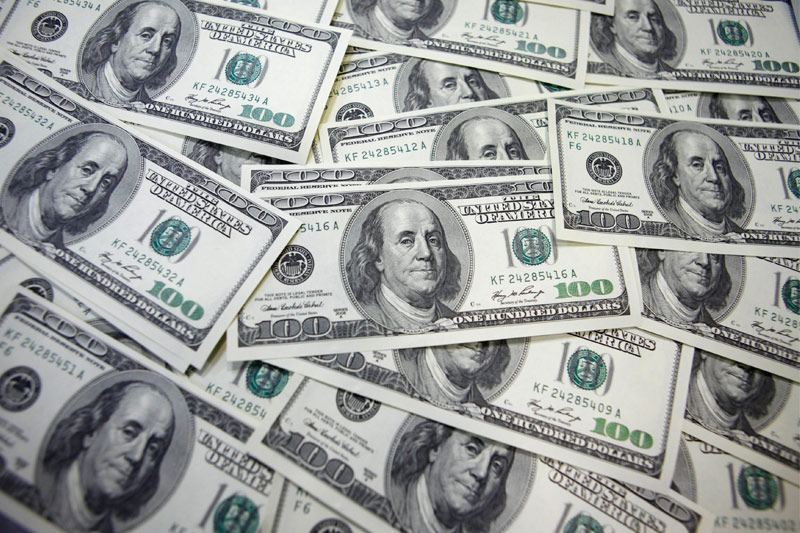Investing.com - The dollar traded largely higher against its peers on Wednesday in a session void of major U.S. economic indicators, though a lackluster European industrial production report softened the euro and fueled demand for the greenback.
In U.S. trading on Wednesday, EUR/USD was down 0.36% at 1.2429.
Earlier Wednesday, Eurostat, the European Union's statistical office, reported that industrial production in the euro area increased by 0.6% in September, missing forecasts for a monthly gain of 1.0%. Industrial production in August fell by 1.4%.
Year-on-year, industrial production inched up 0.6% in September from a year earlier, beating expectations for a 0.2% decline and after dropping at a rate of 0.5% in the preceding month.
The lackluster report stoked concerns over the outlook for economic growth in the single currency bloc after weak Italian data on Monday fueled fears that its economy is falling back into a recession.
Meanwhile, the dollar saw demand due to ongoing expectations that the U.S. economy will continue to recover while European and Asian economies take steps to loosen monetary policy to ward off deflationary pressures.
The dollar was down against the yen, with USD/JPY down 0.19% at 115.55, and up against the Swiss franc, with USD/CHF up 0.28% at 0.9671.
The greenback was up against the pound, with GBP/USD down 0.88% at 1.5780.
The pound came under pressure after the Bank of England reported earlier inflation will likely remain below its 2% target in the near term and fall below 1% at some point during the next six months. The bank said it now expects inflation to take three years to return to its 2% target.
The bank said the outlook for inflation had weakened due to steep declines in commodity prices and the sluggish outlook for global growth.
The annual rate of U.K. inflation fell to a five-year low of 1.2% in September.
"When Bank Rate does begin to rise, the pace of rate increases is expected to be gradual, with rates probably remaining below average historical levels for some time," the BoE said.
The bank said it continued to expect economic growth of 3.5% this year but pared its forecast for growth in 2015 to 2.9% from 3.1% in August.
Earlier Wednesday, the latest U.K. employment report showed that average earnings rose in the three months to September.
The Office of National Statistics reported that total earnings, including bonuses, rose 1.0%, up from a 0.7% increase in the three months to August.
Average weekly earnings, excluding bonuses, rose by 1.3% in the three months to September, after a 0.9% increase in the three months to August.
It was the first time since the onset of the 2008 financial crisis that average weekly earnings, excluding bonuses, outstripped inflation.
The number of people claiming unemployment benefits fell by 20,400 in October the ONS said, below expectations for a decline of 24,900.
The U.K. unemployment rate was unchanged at 6.0% in the three months to September, compared to forecast for a downtick to 5.9%.
The dollar was down against its cousins in Canada, Australia and New Zealand, with USD/CAD down 0.26% at 1.1306, AUD/USD up 0.30% at 0.8712 and NZD/USD up 0.77% at 0.7867.
The US dollar index, which tracks the performance of the greenback versus a basket of six other major currencies, was up 0.34% at 87.91.
On Thursday, the U.S. is to publish the weekly report on initial jobless claims.
